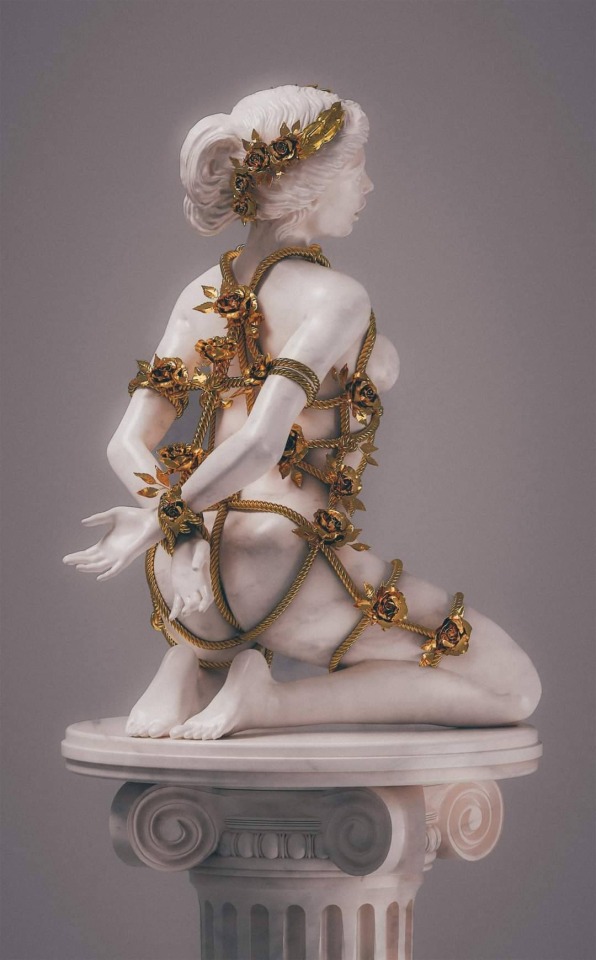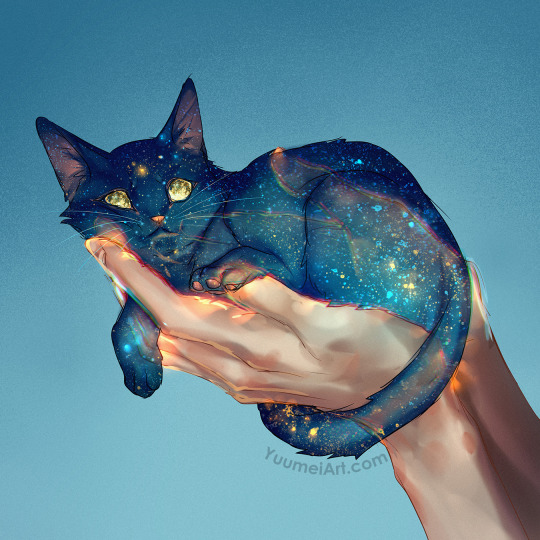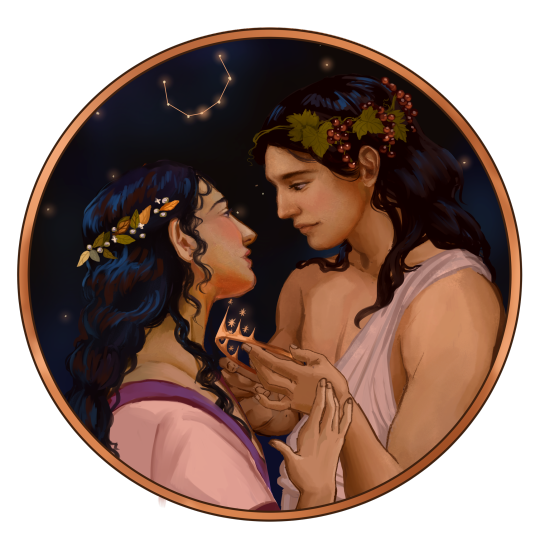miscdelaneyous
91 posts
deciding to do something | doing it on a very grand scale | deciding that i hate it | and then spiraling about it (feat. glitter)
Don't wanna be here? Send us removal request.
Text
There are two types of writers:
1. 'It's fiction, it doesn't need to make sense!'
2. 'I didn't account for the rotation of the planet and how that affects the constalations while my characters stargazed at different times of year, I have failed as a writer, and this entire thing is trash'
52K notes
·
View notes
Note
I've been reading through many of your Inanna related articles and thoroughly enjoyed them so far. In one, you mentioned that Inanna had an extensive retinue/court of attendent deities other than the wonderful Ninshubur, I did a bit of looking but haven't found much information, who were these other deities or where can I find out more about them? Thank you regardless of reply 💜.
On my wiki profile, under "Articles I worked on", in the "courtiers" subsection:

A brief (relatively speaking) summary of the development of Inanna's court across the different time periods under the cut.
The oldest direct reference to another deity acting as a courtier of Inanna occurs in the Zame Hymns from Abu Salabikh (Manfred Krebernik, Jan J. W. Lisman, The Sumerian Zame Hymns from Tell Abū Ṣalābīḫ, p. 41):

While the reading of the name is not entirely secure, it’s generally accepted that Nin-AB.KID.KID is supposed to be Ninshubur under the secondary name Ninakkil, which refers to her cult center near Uruk, Akkil. The references to deities designated as SAL+ḪUB2 are quite rare, and only Ninshubur ever bears this title wrt Inanna, so I see no reason to seek alternative interpretations (this is essentially the conclusion of the hymn’s translators; see The Sumerian…, p. 129-130). Additionally, in a roughly contemporary riddle from Lagash the somewhat elusive god Mes-sanga-Unug is labeled as an official of Inanna. However, in contrast with Ninshubur he generally doesn’t appear in the proximity of Inanna later on (Walther Sallaberger, Uruk in der Frühen Bronzezeit: Zu dessen Königen und Göttern und zur Lage von Kulaba, p. 358).
The sources from Uruk from the Ur III period reflect a more elaborate circle encompassing, among others, the likes of Nanaya (who, while a newcomer, was there to stay and eventually eclipse Inanna), Kanisurra, Ningizibara (a deified harp or a harpist goddess), the pair Annunitum and Ulmašitum, and a few elusive oddities (Uruk in der…, p. 361-362). It’s worth noting that while Inanna of Zabalam was effectively a distinct deity, with her own unique connection with Shara, both Ninshubur and Nanaya appear in association with her in Umma alongside the afaik otherwise unknown Apiriĝmaḫ (Hartmut Waetzoldt, Umma A. Philologisch in RlA vol. 14, p. 322) Nanaya’s newfound Ur III status is at least implicitly reaffirmed in the Old Babylonian Weidner god list, which preserves the sequence Ninshubur-Nanaya-Bizilla-Kanisurra (Marten Stol, Nanaja in RlA vol. 9, p. 146).
However, there’s a strong case to be made that Bizilla, Kanisurra, as well as a further deity not listed there but frequently found in the company of Nanaya and Kanisurra, namely Gazbaba, are really Nanaya-adjacent, not Inanna-adjacent (Gioele Zisa, The Loss of Male Sexual Desire in Ancient Mesopotamia, Nīš Libbi Therapies, p. 141-142). Nanaya, Kanisurra and Gazbaba effectively form a recurring group with Inanna and Ishara (an Eblaite import associated with marriages) in love incantations, though, so I think they count (The Loss…, p. 138). Old Babylonian literary texts might add further deities to the court; some examples include Lulal (literally “syrup man”) in Inanna’s Descent (Anna Glenn, Jeremiah Peterson, The Lulal širgida Composition CBS 12590 (HAV 5, pl. 7, VIII), p. 169) and Ninmeurur in the lament Uru-Ama'irabi (Antoine Cavigneaux, Manfred Krebernik, Nin-me-urur in RlA vol. 9, p. 471).
The single most extensive expanded court can be found in the god list An = Anum from the Kassite period (newest edition: Wilfred G. Lambert, Ryan D. Winters, An = Anum and Related Lists; all references in the next paragraph use it as a point of reference). It’s easy to find bold claims online that An = Anum and other lists were meant to simplify the pantheon because there were too many gods for theologians to keep track of. To put it very bluntly, it’s a conclusion you can only reach if you haven’t looked at the actual text. An = Anum doesn’t simplify anything; quite the opposite, its compilers evidently revelled in bringing up otherwise unattested or sparsely attested courtiers or family members. And for the most part no major deities are equated with each other - not even Ninurta and Ningirsu. The Inanna section is a pretty good example. It lists two “advisors” (gu-balag; Ninigizibara and Ninsigaranna; lines 73-74, p. 164), possibly around 20 miscellaneous courtiers whose names are lost, two “attendants” (AN-gub-ba; Uru-AN.TUR and Enmeuranna, lines 96-97, p. 166), five “interpreters” (inim balbal, p. 168; Šilabat is the only one who has any other attestations afaik), 18 messengers (lukingia; p. 168-170; at least three - Abbašušu, Kilili and Abtagigi - occur elsewhere) and 8 outdoor shrines (sic; ublilla, p. 170) of Inanna. Those are for the most part figures of utterly minuscule importance, though. We know Nanaya had her own sub-section, and Gazbaba apparently appears on her own, so it’s not like the mainstays were neglected, but the poor state of preservation of all surviving copies of tablet IV makes it hard to say much beyond that.
Neo-Assyrian sources provide some information about the entourages of local northern Inannas; these don’t necessarily overlap with the “standard” lists discussed above, but they’re nonetheless pretty interesting. The best example I can think of deals with the city of Arbela. Some interesting inclusions are Ninatta and Kulitta (musician goddesses actually “borrowed” from the court of Inanna’s Hurrian counterpart Shaushka); Umbidaki (a mangled spelling of the Hurrian god Nupatik); and unspecified “Daughters of Arbail”, apparently generic divine maidservants (John MacGinnis, The Gods of Arbail, p. 109).
The next well documented version of Inanna’s court is known from Uruk from the Neo-Babylonian period. The pantheon of the city was headed by a pentad including Inanna, Nanaya and three relative newcomers: Usur-amassu (a particular favorite; I plan to cover her in a separate article later this year), Urkayitu (more or less the deification of the city) and Bēltu-ša-Rēš. However, it’s quite likely that a host of minor deities - possibly referred to simply as “the ladies” (belētu) - was grouped with them. Potential members of this larger grouping include both well attested Inanna and/or Nanaya orbiters like Kanisurra and some newcomers, like Ahlamayitu, Belet-balati or Kurunnitu (Paul-Alain Beaulieu, The Pantheon of Uruk in the Neo-Babylonian Period, p. 179). Kilili and Abbašušu from An = Anum, as well as a further closely related (or even identical) deity, Nunnirdudu, also pop up, though mostly in uncertain contexts (The Pantheon…, p. 320). It’s also possible that Nanaya’s stunt double Bizilla was worshipped in Uruk in association with her under the variant name Ninzizli, though this is uncertain (The Pantheon…, p. 322).
The developments in Uruk didn’t stop in the Neo-Babylonian period, and yet another version of Inanna’s court is preserved in instructions for her akītu (new year festival). In addition to some names you’ve already seen multiple times in this reply - Ninigizibarra, Kanisurra, Ninmeurur, Urkayitu and Annunitu - it also involved a group only designated as the “Daughters of Eanna” (cf. the “Daughters of Arbail” above); Ninsianna (the distinctly genderfluid personification of the planet Venus); Išartu (personified legal order); Šagepada; Abeturra; Šarrat-parakki; the mythical sage Adapa; Bēlet-Eanna (confusingly not Inanna as the “lady of Eanna”, but rather a local goddess of the nearby settlement Udannu); and a few others. Notably, a whole host of deities sourced from the An = Anum court appear - Kilili and Bariritu come as no surprise, but the presence of all five “translators”, Ninsigaranna, Ninḫenunna, En(me)uranna and ŠEŠ.AN.TUR (reading uncertain) is unexpected (Julia Krul, The Revival of the Anu Cult and the Nocturnal Fire Ceremony at Late Babylonian Uruk, p. 67-69). Seemingly An = Anum - by then a venerable classic, over a thousand years old - was seen as authoritative to the point that deities mentioned in it were brought back (or introduced for the first time!) for what was essentially a last huzzah of Uruk as a religious center. This phenomenon has been aptly described as “antiquarian theology” (The Revival…, p. 79-80).
9 notes
·
View notes
Text
20. 25 Days of Ghibli: The Tale of Princess Kaguya
It’s another masterpiece by Isao Takahata which once again takes new routes in animation: The Tale of Princess Kaguya.

Based on the Japanese folktale of the same name, a bamboo cutter finds a tiny and elegantly dressed girl in a glowing bamboo shoot. Taking this as a sign she will become a princess, the bamboo cutter and his wife raise the girl as their daughter. Yet she appears to be growing at a rapid pace; one day she’s an infant, the next a toddler, and eventually a young teenager. Her father continues finding riches in bamboo shoots, and he plans to make her a princess, eventually moving the family to the capital in a grand mansion. All seems well for the new princess, who gains the name Kaguya, but she soon finds this life is missing the joy she once had in the mountains, quickly becoming depressed and rebellious to any suitors who ask for her hand. Now she has to get clever to find that happiness she longs for and remember her purpose.
It very much sounds familiar to quite a few Disney films of the rebellious princess who finds the task more tiring and repressive than it’s worth. But it doesn’t feel cliched here as we spend most of the time around Kaguya herself. You see her growing up in the village, her trying to fit in among royalty, realizing how restrictive it is, messing around with the suitors, and of course, a lot of miscommunication with her parents on what they think will make her happy versus what she actually needs to be happy. Her parents are really fascinating at the mother just wants to raise a child while the father is obsessed with social status to the point where it’s more about him than his daughter. There’s one really eerie line where Kaguya says she’ll be sure her father gets this higher status among the emperor, and afterwards she’ll kill herself. Her parents are in just as much shock as the audience is; not sure how to respond to it and seeing just how far her depression has gone the longer her father persists on finding a suitor. It’s pretty fucked up when you think of how much damage parental love can be when it fails its purpose or is led on another path.
And the drama is upped when you finally figure out her origins, why she’s there to begin with, and how it becomes increasingly harder for her to be happy as the high demands of royalty seem to suffocate her. It’s just a wonderful character study of someone discovering the sorrows and joys of life with a ton of atmosphere to go with, and it makes for one of the most bittersweet endings of Ghibli.
However, it does drag after a while. I was still enjoying Kaguya interacting with all these characters and exploring her depression, but I definitely noticed the length. Some scenes probably could have been condensed down and done at a faster pace, cause there’s only so much I can watch of just atmosphere, even though it is beautiful imagery to look at.
Speaking of, this a new artistic style for Ghibli in replicating traditional Japanese drawings and watercolors. There isn’t a lot of focus on detail, the backgrounds often fade out to white, and a lot of the sketchy lines are left in. It’s perfect for the atmospheric scenes– where you mostly focus on the characters and not so much the grand landscapes or scenery surrounding them– and when the animation does become more dynamic, it’s really amazing, the best of it being when Kaguya runs away from the mansion.

Something about sketchy animation just draws me in, and this part captures some great possibility to the style. I really wish they did more scenes like that to represent Kaguya’s emotional state because I never get tired of it; it’s impressive every time I see it.
You do have to be willing to sit through a more slow-paced film, but the art, character interactions, and atmosphere are still worth the run time. Take a look at the great stuff animation can pull off, and enjoy a bittersweet story on what it means to live. Easily one of Takahata’s best next to Grave of the Fireflies, and one not to be missed.
4 notes
·
View notes
Text
Now that Twitter's URL has officially changed, lets all join hands and remember that Elon Musk threw away one of the most recognizable, established brands of the past decade due to his personal chuunibyou fascination with the letter X.
53K notes
·
View notes
Photo




Phaistos Disc
The Phaistos Disc (also spelled Phaistos Disk, Phaestos Disc) is a disk of fired clay from the Minoan palace of Phaistos on the Greek island of Crete, possibly dating to the middle or late Minoan Bronze Age (2nd millennium BC). It is about 15 cm (5.9 in) in diameter and covered on both sides with a spiral of stamped symbols. Its purpose and meaning, and even its original geographical place of manufacture, remain disputed, making it one of the most famous mysteries of archaeology. This unique object is now on display at the archaeological museum of Heraklion. The disc was discovered in 1908 by the Italian archaeologist Luigi Pernier in the Minoan palace-site of Phaistos, and features 241 tokens, comprising 45 unique signs, which were apparently made by pressing hieroglyphic “seals” into a disc of soft clay, in a clockwise sequence spiraling toward the disc’s center. The Phaistos Disc captured the imagination of amateur and professional archeologists, and many attempts have been made to decipher the code behind the disc’s signs. While it is not clear that it is a script, most attempted decipherments assume that it is; most additionally assume a syllabary, others an alphabet or logography. Attempts at decipherment are generally thought to be unlikely to succeed unless more examples of the signs are found, as it is generally agreed that there is not enough context available for a meaningful analysis. Although the Phaistos Disc is generally accepted as authentic by archaeologists, a few scholars believe that the disc is a forgery or a hoax. source | edit
243 notes
·
View notes
Text
filmmakers and audiences and critics alike all need to start suspending their disbelief again
182K notes
·
View notes
Video
Blue Spaces Of Everyday Enchantments : White Absences #2. Silence/Void : Gap/Reveal by Russell Moreton Via Flickr: visualartpractices.wordpress.com Research as a discursive activity gathering new forms of expression. Duration, Steven Holl Time is only understood in relation to a process or a phenomenon. The duration of human beings alive in one time and place is a relational notion. The time of one’s being is provisional; it is a circumstance with an adopted aim for the time being. SPACE-and ARCHITECTURE-exceeds the provisional The Enchantment of Modern Life. Attachments, Crossing and Ethics The performativity of social representations When I gather together the animals, arguments, molecules, suggestions, forces, interpretations, sounds, people, and images of this study, one theme emerges. The modern story of disenchantment leaves out important things, and it neglects crucial sources of ethical generosity in doing so. Without modes of enchantment, we might not have the energy and inspiration to enact ecological projects, or to contest ugly and unjust modes of commercialization, or to respond generously to humans and nonhumans that challenge our settled identities. These enchantments are already in and around us. Jane Bennett Be not inhospitable to strangers lest they be angels in disguise Jackie Leven, The Dent In The Fender And The Wheel Of Fate David Childers, Heart In My Soul SLOW TIME Retreating in / from art institutions. Heather Anderson. www.academia.edu/37438321/Retreating_in_from_art_institut…
3 notes
·
View notes
Photo

Sophie Anderson “Take The Fair Face of Woman” detail,1869.
2K notes
·
View notes
Text

roses of restraint by Oliver Ler Marinkoski
22K notes
·
View notes
Text

need to go on a flower filled boat ride at least once in this lifetime
(via)
4K notes
·
View notes








